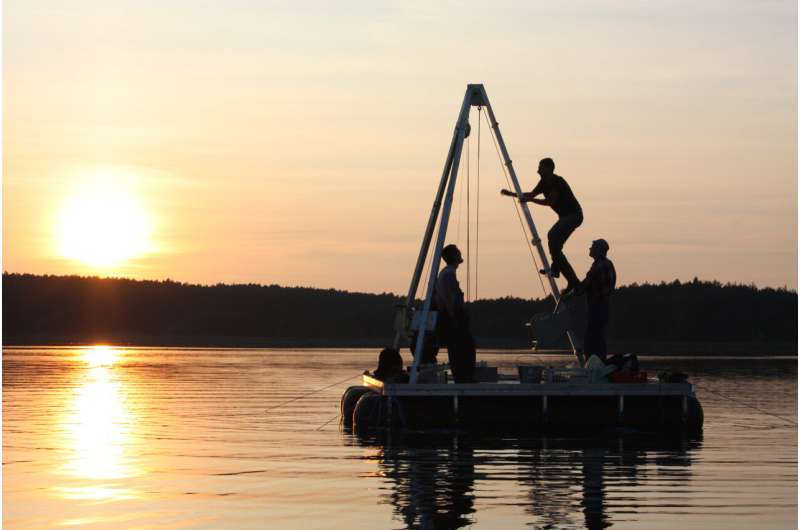Corporate influence linked to slow implementation of public health policies globally
Implementation of WHO’s recommended public health policies on alcohol, unhealthy foods and tobacco has been slow globally, according to a study led by researchers at Karolinska Institutet and the London School of Hygiene & Tropical Medicine, published in the journal The Lancet Global Health. The study found particularly low implementation in poor, less democratic countries and where corporations had more influence for example through corruption and political favoritism.
In 2013, the World Health Organization’s 194 member states endorsed a list of so-called ‘Best Buy’ policies to combat non-communicable diseases (NCDs), such as heart disease, cancer, diabetes and chronic lung disease.
The list includes 19 interventions targeted at preventing, monitoring and treating NCDs, with a particular focus on harmful products such as tobacco, alcohol and unhealthy foods. These policies could play a vital role in achieving the United Nations’ Sustainable Development Goal target of cutting premature NCD mortality by a third between 2015 and 2030.
In the study, the researchers examined to what extent WHO member states had implemented the policies and analyzed if national level indicators correlated with the degree of implementation. The analysis is based on three so-called NCD progress monitor reports, where the degree of implementation of NCD policies is reported, as well as a framework of national indicators developed by the study authors.
The researchers note that on average, only a third of the public health policies had been fully implemented in 2020. When awarding a half-point for partially implemented policies, the average implementation score was 47 percent in 2020, up from 45.9 percent in 2017 and 39.0 percent in 2015.
Low scores for alcohol, junk food and tobacco measures
Implementation was lowest for policies targeting alcohol, unhealthy foods and tobacco. For example, around two-thirds of countries had not implemented WHO recommended restrictions on marketing of unhealthy food to children in 2020. Implementation of measures targeting alcohol use, including restrictions on sales and advertising, even eased between 2015 and 2020, while for measures targeting tobacco, it improved somewhat. The most widely implemented interventions were clinical guidelines and national action plans and targets to combat NCDs.
“Our study found slow overall implementation of WHO’s recommended NCD policies, especially when it comes to measures targeted at risk factors such as smoking, alcohol and unhealthy foods,” says corresponding author Hampus Holmer, researcher at the Department of Global Public Health, Karolinska Institutet, who conducted the study in collaboration with Luke Allen, research fellow at the London School of Hygiene & Tropical Medicine, U.K., and Professor Simon Wigley at Bilkent University, Turkey.
“This is worrying since non-communicable disease is already the most common cause of death, including premature death, in the world today. Several of these diseases are also linked to an increased risk of dying of infectious diseases such as COVID-19 or tuberculosis,” Hampus Holmer adds.
Progress was especially slow in low-income countries and countries with less democracy. At the bottom of the list are three countries in West Africa—Equatorial Guinea, Guinea-Bissau and Sierra Leone—with one to two partially implemented policies. Norway and Turkey are at the top of the list with 90 percent fully or partially implemented measures.
Correlation with corporate influence
The researchers found that the positive relationship between democracy on implementation was cancelled out in countries with above-average levels of corporate influence. Corporate influence was measured using an existing index with 25 metrics of corporate power, including corruption, bribery, government official favoritism, foreign investments and foreign contributions to political campaigns. Lobbying was not part of the assessment due to a lack of reliable data for many countries, which is a limitation of the study.
“Our analysis shows that corporate political influence is associated with the degree of implementation – the more influence corporations had, the lower the degree of implementation of preventive public health measures,” says Luke Allen, the first author of the study. “While we cannot establish causality, our findings indicate that more work is needed to support particularly low-income countries in introducing effective NCD policies, especially around commercial determinants.”
The researchers also found a significant positive correlation between the proportion of deaths due to NCDs and policy implementation, suggesting that policymakers are more prone to act as the burden of NCDs grows. However, delayed action could be problematic as the impact of prevention may take years to have its full effect.
Funding was provided by the National Institutes for Health Research, the Swedish Research Council, the Fulbright Commission, and the Swedish Society of Medicine. No conflicts of interest were reported.
Publication: “Implementation of non-communicable disease policies from 2015 to 2020: a geopolitical analysis of 194 countries.” Luke N Allen, Simon Wigley, Hampus Holmer, The Lancet Global Health, online Oct. 19, 2021, doi: 10.1016/PIIS2214-109X(21)00359-4
JOURNAL
The Lancet Global Health
METHOD OF RESEARCH
Data/statistical analysis
SUBJECT OF RESEARCH
Not applicable
ARTICLE TITLE
“Implementation of non-communicable disease policies from 2015 to 2020: a geopolitical analysis of 194 countries"
ARTICLE PUBLICATION DATE
19-Oct-2021


